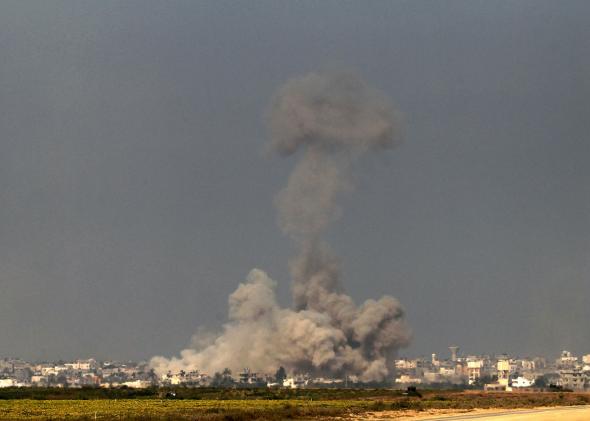In the Israeli-Palestinian conflict, you can usually count on someone to snatch catastrophe from the jaws of peace.
A number of humanitarian cease-fires had already been called in the now nearly monthlong war in Gaza, but the one that was supposed to go into effect for 72 hours starting this morning felt different. Three days, as opposed to 12 hours, is enough time to get some real diplomatic momentum going. Negotiators from both sides were heading to Cairo for talks, and given that Israel claimed to be pretty close to accomplishing its stated military objective—the destruction of Hamas’ tunnel network—it seemed plausible that the truce could make the beginning of a gradual de-escalation.
Now, Hamas has apparently captured an Israeli soldier using a tunnel near Rafah, and Israeli bombardments have resumed. Israel says the capture came after the cease-fire went into effect. Hamas says it was before.
This would seem to mark the end not just of this cease-fire but of a phase in the conflict where a series of rolling cease-fires leading to a diplomatic solution was a plausible strategy.
Even if Netanyahu wanted to de-escalate the conflict, that seems politically impossible now with an IDF soldier in custody. Israel will likely step up its strikes against Gaza and with even less regard for civilian casualties.
Hamas, meanwhile, is unlikely to give up its prisoner anytime soon. Remember, Gilad Shalit, the IDF soldier captured in 2006, was released only after five years and the release of 1,000 Palestinian prisoners. The prospects for a similar deal seem pretty remote right now.
A few days ago, it seemed possible that Israel might be on the verge of simply declaring its military goals accomplished and pulling out. But rescuing a prisoner likely being held somewhere underground in Gaza is going to take a lot longer than simply destroying tunnels. The violence seems likely to continue for some time now, and a long-term reoccupation of Gaza—a scenario called for by some senior Israeli officials—now seems a lot more likely than it did a few days ago.
This iteration of the long-running Israel-Hamas conflict seemed as if it was likely to end with case-fires and a return to the grim status quo after a few weeks, like previous iterations in 2008 and 2012 had. But it’s starting to look like we’re witnessing something much worse.
